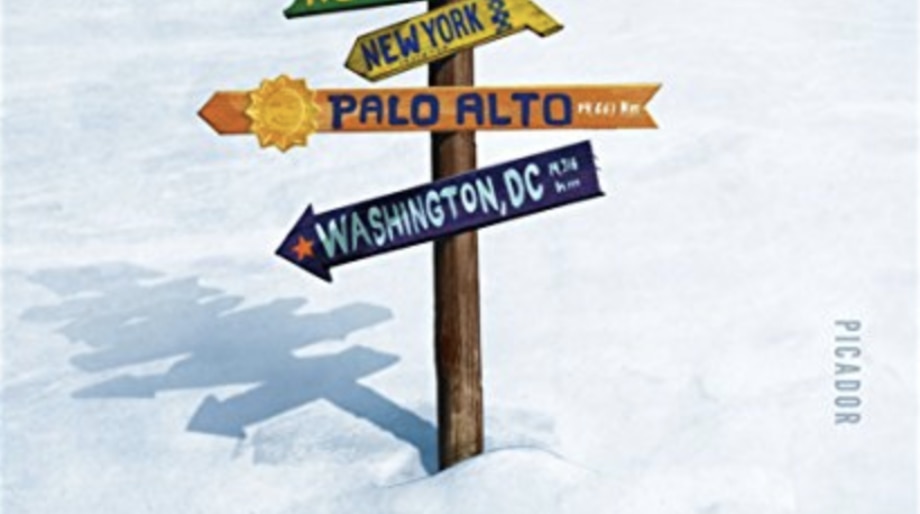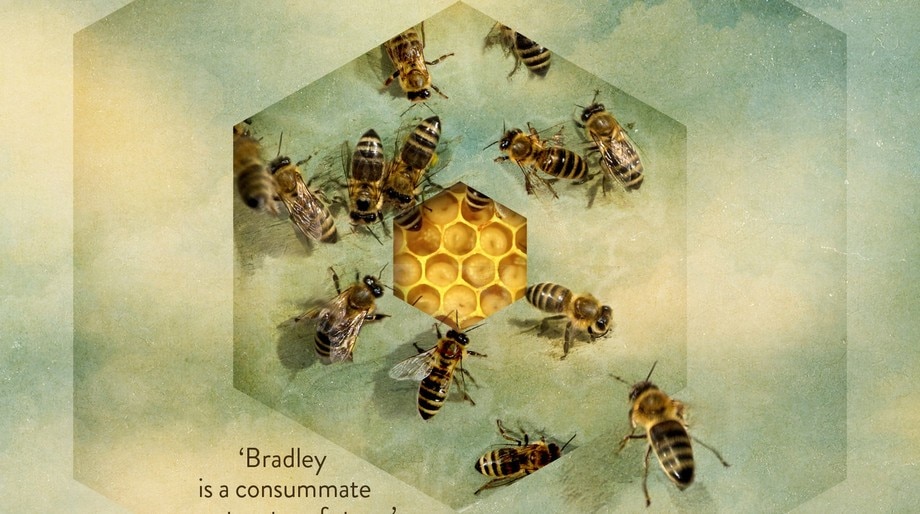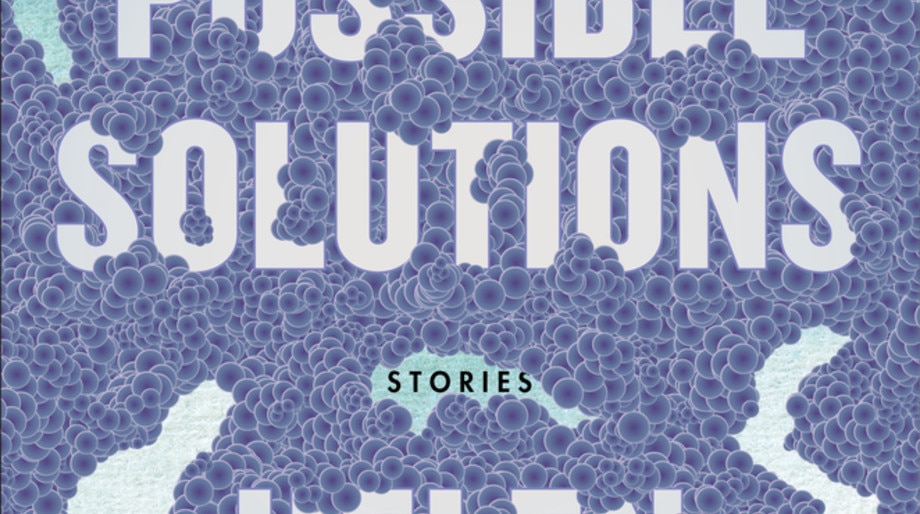v

Six recs for important ''cli-fi'' novels from around the world, not just the USA....
Contributed by
Scientists declared 2016 to be the hottest year ever recorded on Earth, and 2017 isn't far behind. This year also brought devastating hurricanes, wildfires, and more arctic and Antarctic ice melt than scientists predicted was possible. When taken together, these events present a frightening conclusion: The Earth is warming, and the consequences are potentially catastrophic.
Leaders from around the world gathered recently in Germany for the annual United Nations conference on climate change. COP23. There theydiscussed progress made toward the Paris agreement, including Syria’s decision to join the accord—a move that situates the United States as the only nation in the world not on board with the climate deal.
But world leaders and scientists aren't the only ones concerned about the planet. Novelists from across genres have taken to writing about climate change in their cli-fi fiction.
Many of these cli-fi novels and short stories take place in the future and share tropes with science fiction, such as otherworldly technologies, cyborg-like species roaming the planet, and futuristic engineering to keep rising sea levels at bay. Others take place in the present and feature protagonists who ask questions about what's to come and what we can do to prevent the worst from happening. Others still may or may not take place on Earth at all, but depict planets that have become so polluted they're barely habitable.
All of these novels fall under a category that's only recently been named (see hot link at): climate fiction, or cli-fi. It's a genre that some writers -- like Annalee Newitz, author of the cli-fi novel Autonomous -- believe can actually affect how people view climate change.
"Fictional stories can give us the long view, taking us beyond our puny human lifespans and revealing how the Earth's environments will change over thousands of years," Newitz tells SYFY WIRE. "Fiction can also explore how human civilization will cope with the floods, fires, and famines to come. We are a resilient species, and we need stories about how we'll survive and clean up the mess we've made just as much as we need news reports of a world in ruins."
Since cli-fi encompasses so many different writing styles, it offers something for everyone, regardless of literary tastes. Here's a guide to get you started.
Leaders from around the world gathered recently in Germany for the annual United Nations conference on climate change. COP23. There theydiscussed progress made toward the Paris agreement, including Syria’s decision to join the accord—a move that situates the United States as the only nation in the world not on board with the climate deal.
But world leaders and scientists aren't the only ones concerned about the planet. Novelists from across genres have taken to writing about climate change in their cli-fi fiction.
Many of these cli-fi novels and short stories take place in the future and share tropes with science fiction, such as otherworldly technologies, cyborg-like species roaming the planet, and futuristic engineering to keep rising sea levels at bay. Others take place in the present and feature protagonists who ask questions about what's to come and what we can do to prevent the worst from happening. Others still may or may not take place on Earth at all, but depict planets that have become so polluted they're barely habitable.
All of these novels fall under a category that's only recently been named (see hot link at): climate fiction, or cli-fi. It's a genre that some writers -- like Annalee Newitz, author of the cli-fi novel Autonomous -- believe can actually affect how people view climate change.
"Fictional stories can give us the long view, taking us beyond our puny human lifespans and revealing how the Earth's environments will change over thousands of years," Newitz tells SYFY WIRE. "Fiction can also explore how human civilization will cope with the floods, fires, and famines to come. We are a resilient species, and we need stories about how we'll survive and clean up the mess we've made just as much as we need news reports of a world in ruins."
Since cli-fi encompasses so many different writing styles, it offers something for everyone, regardless of literary tastes. Here's a guide to get you started.

01 06
01 06
Future world: Autonomous by Annalee Newitz
Set on Earth in the 22nd century, Autonomous gives us Jack, a medical drug pirate who's reverse engineering vital medicines for a world ravaged by climate-caused diseases. She's hunted by a military agent named Eliasz and his robot companion, Paladin, who have been hired to stop her. In this future, robots contain human organs inside their metal bodies and have developed artificial intelligence to the point of consciousness. It's the perfect novel for people looking for stories about how climate change will inform biotechnology, our understanding of gender fluidity, and the future of Big Pharma.

02 05
02 05
Future world: New York 2140 by Kim Stanley Robinson
New York 2140 is also set more than 100 years from now in a partially submerged Manhattan. Everything below 34th Street is underwater, and sky scrapers now reach more than 300 stories. Robinson is one of America's most beloved novelists, and here we see why: His world-building is impeccable, and the tech that future New Yorkers use feels at once realistic and awesomely inventive. Incredibly, the novel is downright hilarious. Pick up this one if you're a fan of cli-fi coupled with hard science fiction with a Robinsonian sense of humour.

03 04
03 04
Present world: South Pole Station by Ashley Shelby
A former environmental journalist, Shelby wrote a novel set in a research station in present-day Antarctica. Climate scientists discuss, often with wry hilarity, the intricacies of their work, while trying to avoid the climate denier who was hired by an oil company to thwart their scientific studies. For Shelby, cli-fi is at its best when it "concerns itself with the way nature and civilizations interact during a time of rapid and intense climate transition."
When done well, she continues, it "allows people to engage with climate change's possible, and even probable, impact on humanity in a way that doesn't paralyze them with fear and perhaps even fills them with hope and a desire to act." Pick up South Pole Station if you're looking for a funny and hopeful novel about climate change that's heavily informed by current science.
When done well, she continues, it "allows people to engage with climate change's possible, and even probable, impact on humanity in a way that doesn't paralyze them with fear and perhaps even fills them with hope and a desire to act." Pick up South Pole Station if you're looking for a funny and hopeful novel about climate change that's heavily informed by current science.

04 03
04 03
Present world: Clade by James Bradley
An Australian writer, pop music blogger and literary critic, Bradley has written a cli-fi novel that begins in the present and follows subsequent generations into a future where Earth is increasingly altered by climate change. It's one of the more poignant novels on this cli-fi listicle, as it shows how a single family and their closest friends will be devastated by what's possibly to come.
Bradley says cli-fi is important because it helps us to articulate "grief, or fear, or confusion." But at the same time, "it can…push back against despair by making space for possibility." In Clade, one family's triumphs are just as moving as their anguish.
Bradley says cli-fi is important because it helps us to articulate "grief, or fear, or confusion." But at the same time, "it can…push back against despair by making space for possibility." In Clade, one family's triumphs are just as moving as their anguish.

05 02
05 02
Alternate worlds: Borne by Jeff Vandermeer
... Borne is set in an unnamed city that's been destroyed by the Company—a biotech firm now in ruins. For years the Company developed hybrid creatures large and small, and now that it's defunct, those lifeforms are wreaking havoc on the city's people and landscape. A giant flying bear terrorizes everyone and everything, while the river, now a toxic soup, coughs up strange and deformed animals daily. At the center of the story is a small, green, feathery lump named Borne. As Borne grows into adulthood, his human companion, Rachel, begins to see the lump—and the city around her—in a whole new and frightening light. Borne features some of the best world-building of the year. If you read it, you won't forget it any time soon.

06 01
06 01
Alternate worlds: Some Possible Solutions by Helen Phillips
This collection features several short stories set on planets that may or may not be Earth, but star humans wrestling with pollution and social-class hierarchies that pollution has only made worse. Each piece balances eeriness with lyricism, and hope with fear. Fans of all types of speculative fiction will enjoy these beautiful — if uncategorizable — gems of ''cli-fi.''

No comments:
Post a Comment